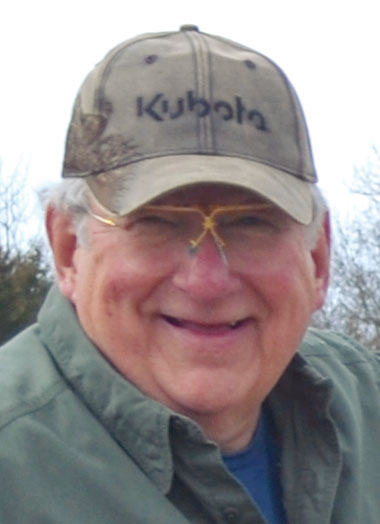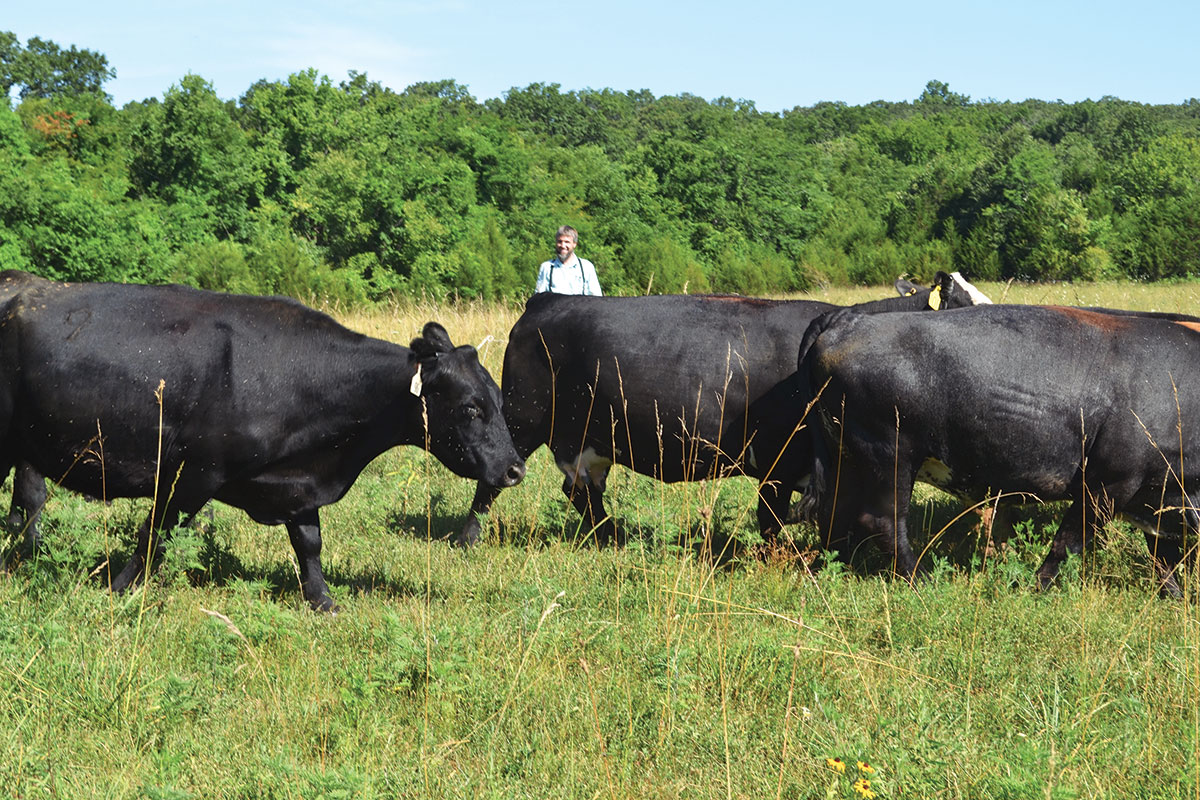
“When I retired from the Army, I’d lived all around the country and decided the Ozarks was the place for us. We bought a farm, built a new house, started with cattle. Very quickly, I learned a lot,” Butch Ferguson said as he explained how he came to the Ozarks. He and his wife, JoEllen, a nurse with the Wounded Warrior Project, have 190 acres in rural Pulaski County, Mo., just south of the St. Robert-Waynesville area.
Butch credits the Heartland Highland Cattle Association and its co-founder and secretary, Gloria Asmussen, with being of immense assistance as he has transitioned from a 29-year Army veteran engineer to becoming an Ozarks cattleman. The couple’s three children have also helped in their cattle operation at various times.
“While still working in research, I was traveling quite a bit so I wanted a smaller breed, one that is accustomed to and more tolerant of people and that’s the Highland cattle. I first saw them at the Ozark Fall Farm Fest and started with three heifers and a little bull calf. I currently have 28 head, but would like to expand to a herd of 60 to 80,” Butch continued. “They are a hardy breed and so tolerant of adverse conditions. Many of the breeds have different issues, like birthing problems, but this breed doesn’t. I remember one of the day old calves bouncing around in the snow a year or two ago, when one of the cows calved early during a snow storm. These babies have got enough extra fur on them to keep them warm.”
Butch shared other virtues of his breed of choice.
“They have a finer meat, with less fat than many of the other breeds,” he said. “We do grass fed, so that makes them slower growing, but we use no medications except anti-fly and keeping them wormed. It’s all about what goes into your body. We want to know what’s in our meat and to know what we are selling to others. We direct market the meat on the hoof, individually through a buyer who supplies health food stores. It means you can be the marketer and you have to find a good meat packer. We have neighbors who also direct market and they sell them on the hoof. They let people take care of the processing themselves so there is more than one way to do this.”
Highland cattle are considered a Heritage Breed, which refers to breeds raised by generations of the past, before large cattle operations became common practice.
“They are a pure strain of cattle, one of the purest of the original European breeds,” Butch explained. They are the root stock of most other breeds raised in the U.S. and Europe; most come from them and the African and Asian categories, the two major bloodlines of the cattle we breed today.”
Butch said he has had great advise from the local the office of Natural Resources Conservation Service in Pulaski County, Mo. as well as resources through the University of Missouri, from both the Extension service and the department of agroforestry. The Leonard Wood Institute, a not-for-profit research center based at Fort Leonard Wood, Mo., also has a program, the Veterans to Farmers Initiative, which is administered through the Sustainable Ozark Partnership, that provides valuable assistance to veterans who might be interested in getting into farming.
“The average farmer right now is 58 years old, so there is real concern about that aging population and different agencies are looking for ways to get younger people into farming,” Butch explained.
While the Highlands are an older breed of cattle, they are sometimes misunderstood, partly because of their long, thick hair coats and their substantial horns.
“These cows are really interesting to watch,” he said, as some of his younger cows literally kicked up their heels, cavorting about their feed trough. “Unlike some breeds with the bigger horns, they are very aware of those horns and their position. You can even watch them use their horns to scratch a particular place on their back. They are very fence-friendly in that they don’t push against fences like some, at least mine don’t. I’ve even accidentally left a gate open and they didn’t go anywhere.”
In addition to cattle, Butch has about 60 acres that he uses for hay production, and he recently added bee hives to his operation.
“We don’t gather any moss around here. We stay pretty busy,” Butch concluded with a smile.







